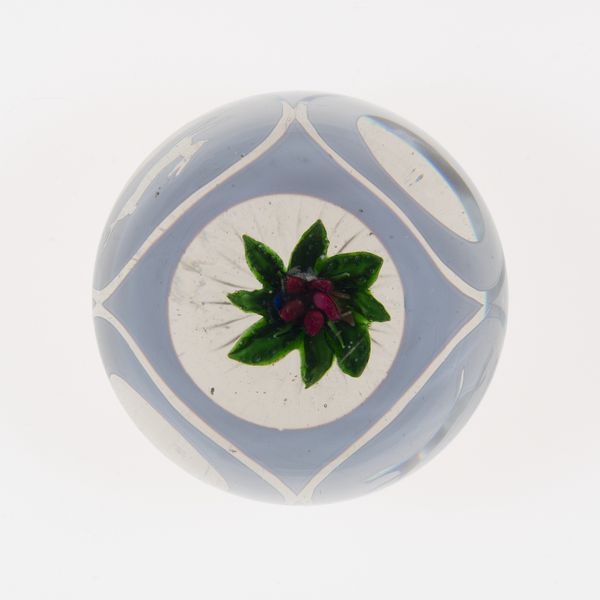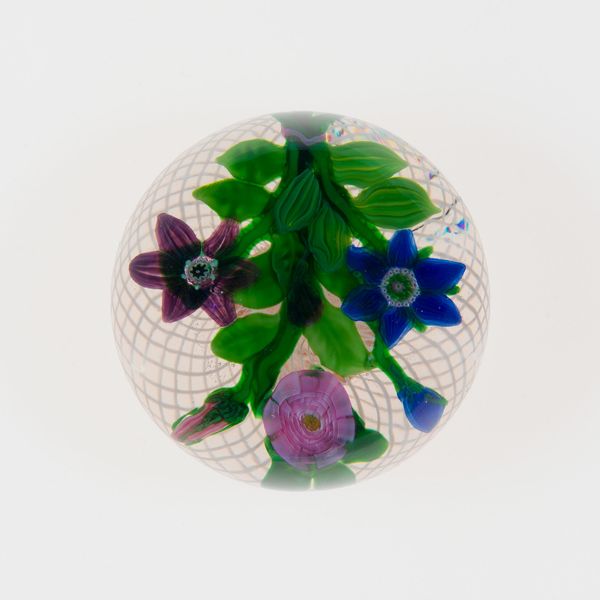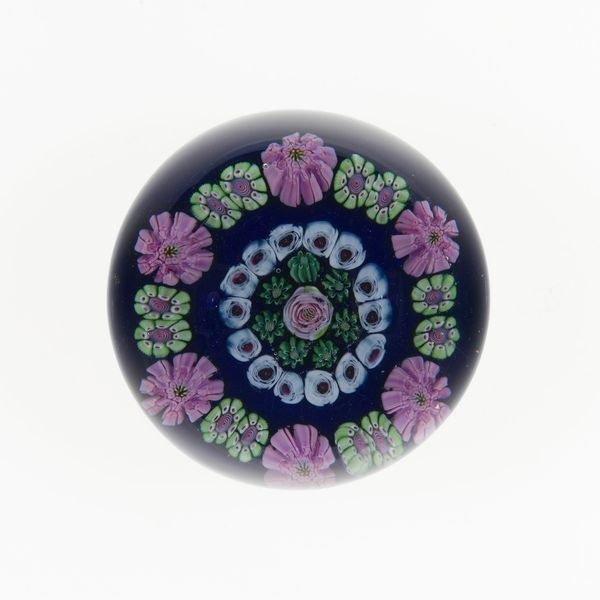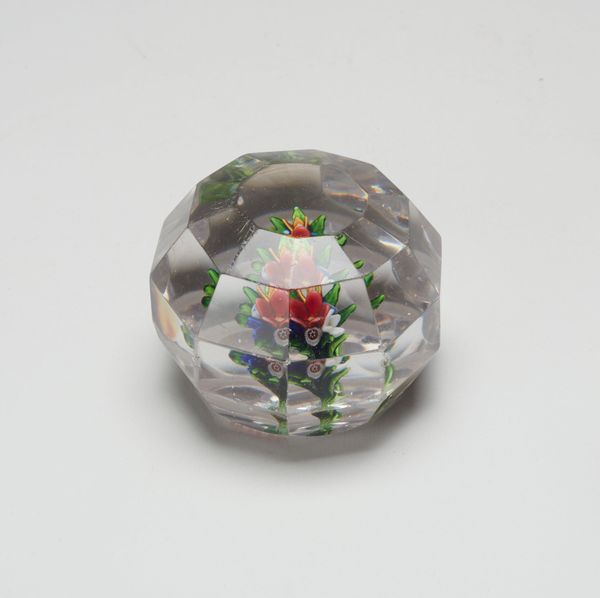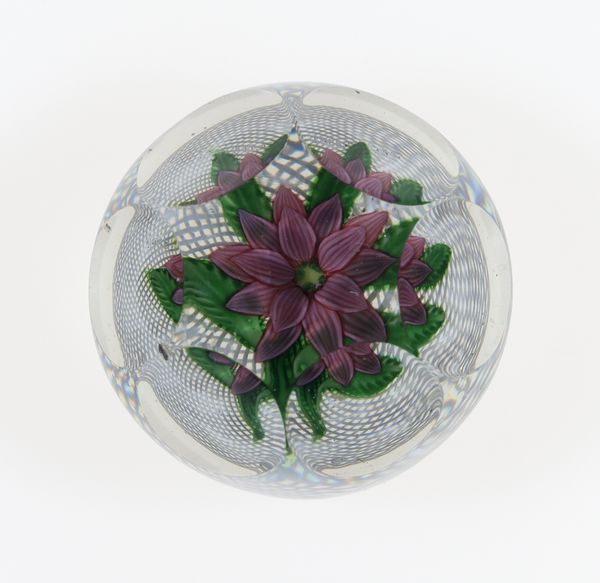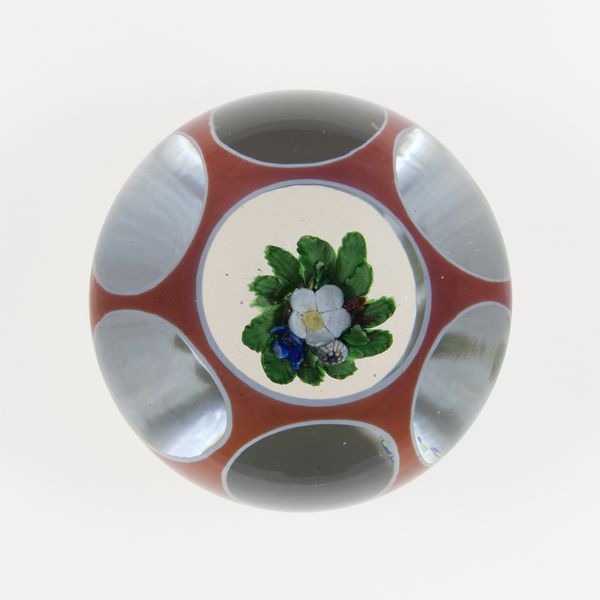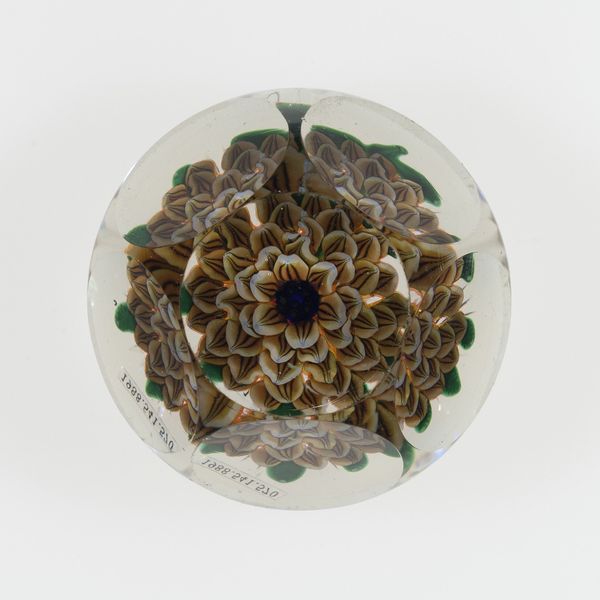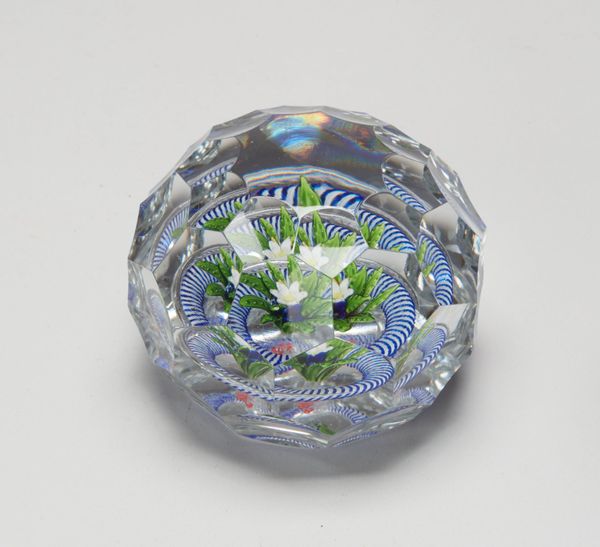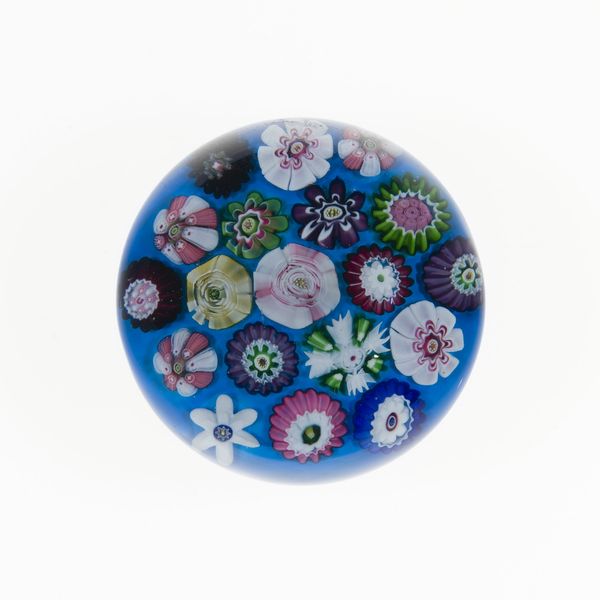
paper, glass
#
paper
#
glass
#
decorative-art
Dimensions: Diam. 7.6 cm (3 in.)
Copyright: Public Domain
Curator: Standing before us is a stunning example of decorative art, a glass paperweight made by the Compagnie de Saint Louis, circa 1848 to 1855. Editor: My first thought is that this feels like captured time. The flowers seem frozen, like a miniature, preserved memory. Curator: That's a beautiful observation. Consider the era in which this was made—a time of rapid industrial change. This kind of decorative object offered a moment of respite, an idealized and controlled representation of nature. The bourgeoisie collected objects such as these to promote their status and cultivation in the domestic sphere. Editor: And look at the choice of flowers! Each one would have held a certain meaning in the language of flowers so popular at the time, which can be explored as it reflects Victorian values. I'm curious, though, what it meant for women. Did they see their lives mirrored in such confined and controlled depictions of the natural world? Is there something disquieting about this glass cage around nature? Curator: Absolutely. And not only that but how does this relate to race and social standing within Victorian era society? This would not only symbolize cultivation and elegance to those of upper standing, but rather exclude minorities and those deemed as underprivileged for they simply did not have access or social capital to take part. It reminds me of work by Saidya Hartman where she calls for a re-imagining of archival absences that challenge the normative expectations of historical knowledge production. How we have normalized privilege, status and elegance rather than challenging it within historical discourse. Editor: Indeed! I can't help but look deeper into the emotional impact. While beautiful, it makes one feel heavy with time. The compression, the weight… how it is frozen almost making one question freedom. The weight is emphasized with the crystal like form that shows some jagged edging making one consider how beauty might become violent, or even restricted. The symbols are not inherently one way of viewing as meaning must be deconstructed in different ways for greater understandings to blossom! Curator: An object of simple beauty reveals such complexity and that truly is the essence of exploring objects. I always believe there is no single objective truth of an artwork, it allows us to connect through subjective responses, different backgrounds and cultural approaches. Editor: And sometimes, just sometimes, objects contain echoes of their time and beyond to tell different narratives. And here, what has begun in stasis now feels fluid!
Comments
No comments
Be the first to comment and join the conversation on the ultimate creative platform.

